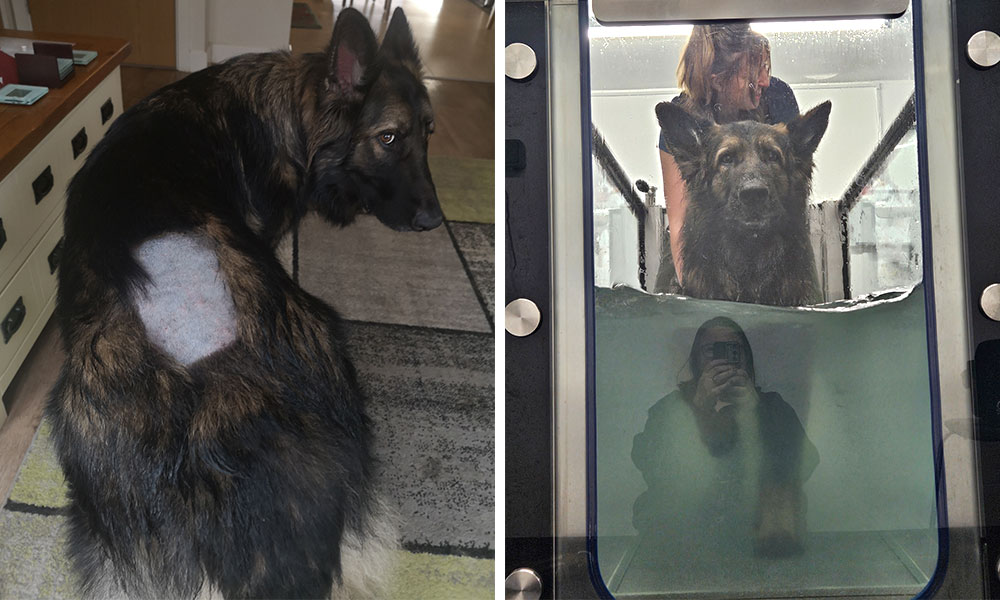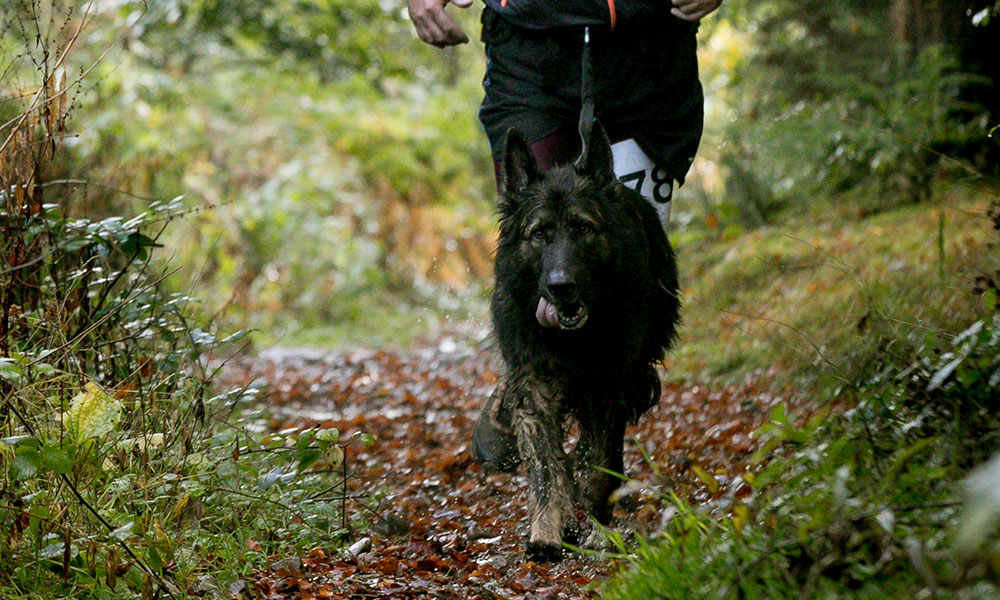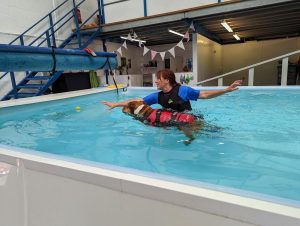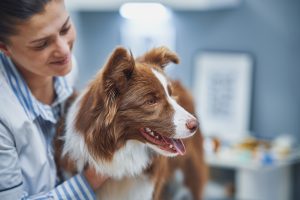Arnhem, a 9-year-old German Shepherd, has lived a full and adventurous life. He began competing in canicross at just 18 months old, and it was during this early period of high performance that his owner first discovered the Canine Fitness Centre through a leaflet at her local vet. Arnhem’s initial sessions in early 2020 focused on sports dog health and fitness, helping to support his active lifestyle.
In late 2020, following an energetic deer-chasing episode, Arnhem became suddenly reluctant to move the next morning—a stark contrast to his usual tail-wagging, joyful self. A swift veterinary referral and MRI confirmed the diagnosis of Degenerative Lumbosacral Stenosis (DLSS). Arnhem’s physiotherapy sessions shifted from sports conditioning to targeted rehabilitation.

Key Mobility Challenges
Arnhem’s main symptoms include:
- Hind limb stiffness and weakness, particularly on the right side
- Occasional offloading of his right hind limb
- Reduced hind limb engagement, making turning movements difficult
- Postural instability and weight shifts when standing
- Pelvic sway and mild forelimb compensation due to lack of hindlimb control
- Intermittent dragging/scuffing of hind paws, especially on uneven surfaces
Despite these challenges, Arnhem has continued to live life to the full. With the help of regular physiotherapy, hydrotherapy, and at-home exercises, he’s been able to enjoy hiking adventures, wild camping, and even some low-key canicross events, right up until his retirement in 2024.

Treatment Plan: Physiotherapy & Hydrotherapy
Arnhem’s rehabilitation includes a combination of physiotherapy and hydrotherapy, focusing on nerve stimulation, strength-building, and postural stability.
Physiotherapy Sessions
- Laser Therapy – Applied to lumbar spine, sacroiliac joints, and hips to reduce inflammation and pain
- Massage & Soft Tissue Therapy – Focused on lumbar paraspinals, hip flexors, and triceps to ease muscle tightness
- Balance & Proprioception Work – Using wobble cushions and controlled weight shifts to improve stability
- Range-of-Motion (ROM) Exercises – Encouraging flexibility in stiff joints while avoiding excessive strain
- Sensory Stimulation Techniques – Engaging hindlimbs with cavaletti poles and tactile stimulation to improve limb awareness
Arnhem is well-known at the centre for his enthusiastic (and noisy!) greetings and his unique interpretation of cavaletti exercises—often requiring gentle redirection and a sense of humour from his therapists. His owner jokes that he coined the physio motto: “Be less banana!”
Hydrotherapy: Underwater Treadmill (UWTM)
Although Arnhem struggles with hind limb coordination, hydrotherapy helps by:
- Providing resistance training while reducing joint stress
- Encouraging correct weight-bearing and movement patterns
- Strengthening core and hind limb muscles
- Improving balance and endurance
Session adjustments include:
- Water depth control to optimise support and muscle engagement
- Guidance to prevent hind limb “plaiting” and medial collapse
- Postural corrections during rest breaks to reinforce proper stance
Progress Over Time
Arnhem has made impressive strides throughout his rehabilitation. With consistent commitment to his sessions and home programme, his progress has included:
- Improved hind limb strength and muscle tone, especially in the glutes and hamstrings
- More balanced posture and reduced pelvic sway
- Better coordination and foot placement, particularly during hydrotherapy sessions
- Increased endurance, allowing longer walks and more sustained activity without fatigue
- Maintained flexibility and reduced muscle tension, thanks to massage and laser therapy
Even with a degenerative diagnosis, Arnhem has been able to participate in meaningful activities like wild camping and hiking, all while avoiding significant regression for years.

Recent Developments & Reassessment
In the past several months, Arnhem’s movement patterns began to shift in a way that didn’t align with typical LS progression. A referral to Lumbry Park Veterinary Specialists revealed moderate cervical spinal stenosis at C6-C7, raising the possibility of Degenerative Myelopathy (DM), now under investigation with genetic testing.
Despite these changes, specialists at Lumbry Park remarked on Arnhem’s excellent physical condition, especially considering his diagnosis four years prior—crediting much of this to the consistent physio and hydro regime he’s maintained.
“We’ve been able to maintain Arnhem to a point where he’s lived a full and active lifestyle despite his condition. Physio and hydro really have been life-changing for him.”

Ongoing Care & Future Outlook
Arnhem’s care plan remains focused on keeping him in peak condition, ensuring he’s strong enough to handle potential future interventions and to keep enjoying his daily adventures. His team is ready to adapt treatment based on the results of the genetic test and any emerging symptoms.
Having access to a diverse treatment toolkit and a dedicated rehab team has allowed for a high level of continuity and flexibility, which has been key in managing unexpected flare-ups and maintaining his quality of life.
Arnhem’s journey—from elite canicross competitor to rehab legend—highlights the value of early intervention, structured therapy, and patient-centred care. Thanks to a dedicated rehabilitation team and unwavering owner commitment, Arnhem continues to live life to the fullest, tail wagging and all.













